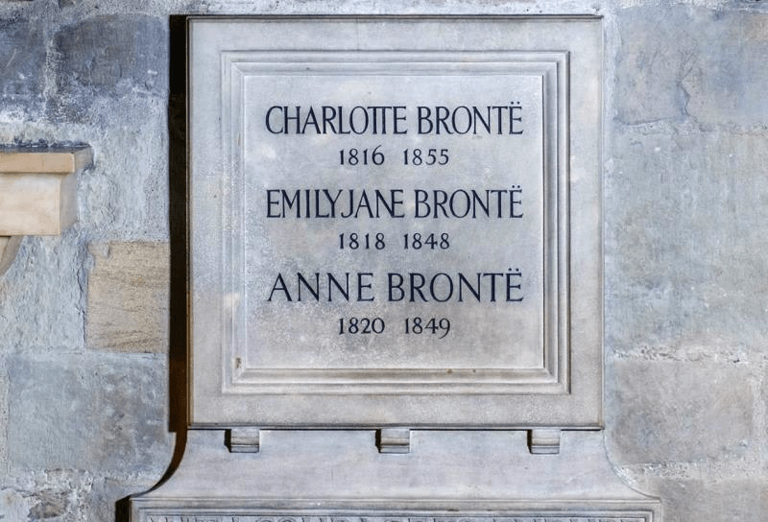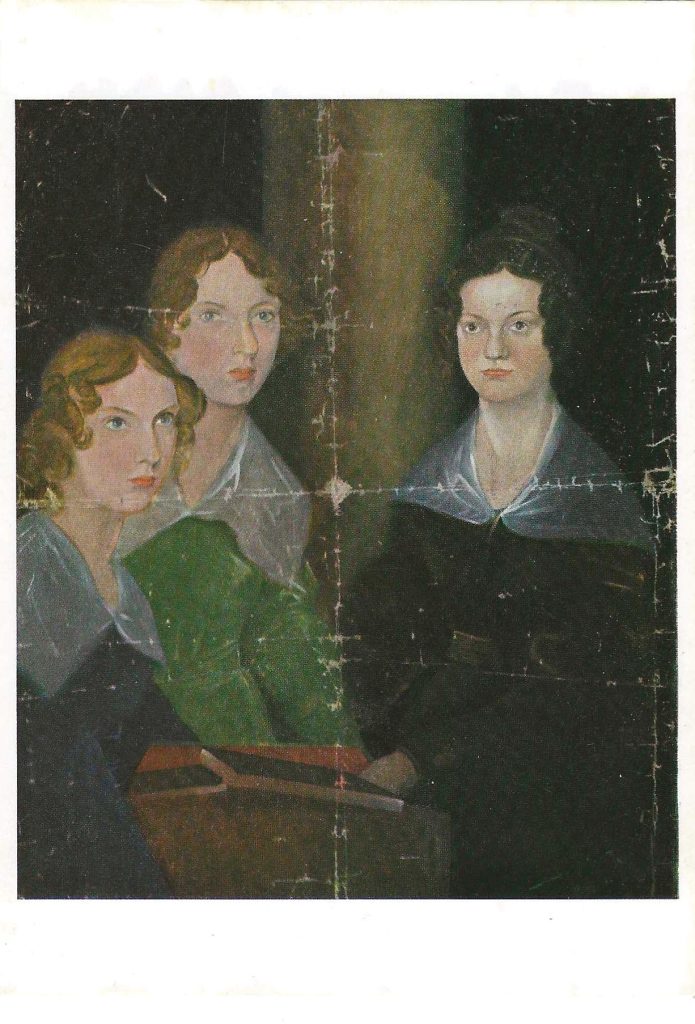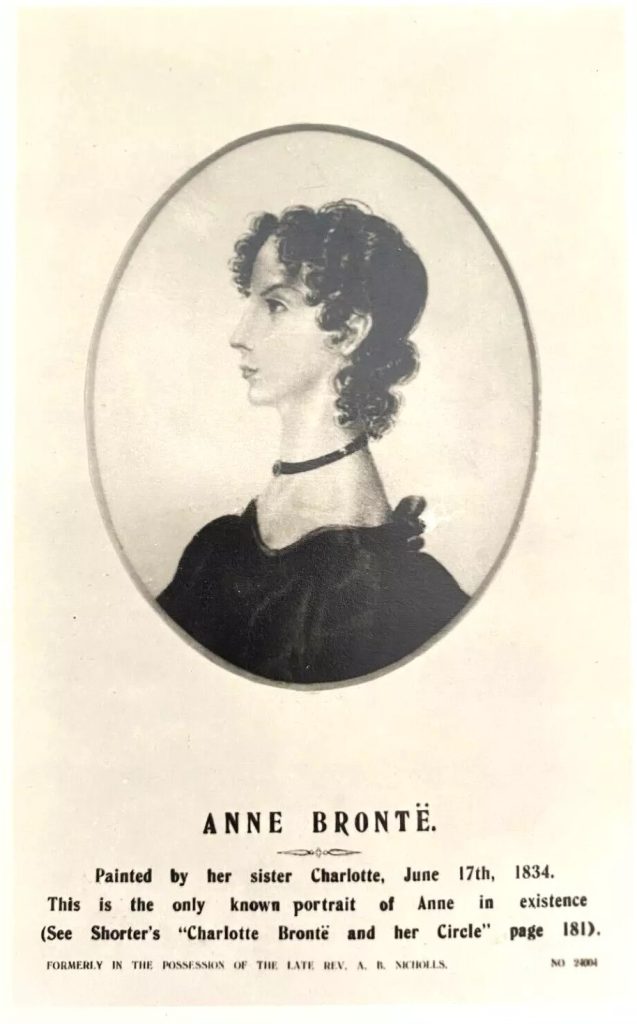In 1939 a stone tablet honoring the literary greats Charlotte, Emily, and Anne Brontë was hung in the Poets’ Corner of Westminster Abbey. There were “misspellings.” The Brontë family spelled their last name, Brontë, with a diaeresis over the last vowel, indicating that it was a separate syllable. The tablet honors the sisters who were three of the English language’s greatest writers.

Suddenly, in recent weeks the error has been fussed over to an understandable degree. But, why now? [Your editor takes no specific joy in saying so, but I noticed the error nearly fourty years ago while visiting the Abbey during Christmas week in 1987. And, for my money, a missing diacritical mark is not necessarily a misspelling.]
So, here’s why! When Sharon Wright, the editor of the Brontë Society Gazette, saw it recently, she was furious. She told The Guardian (a British daily newspaper that was founded in Manchester in 1892, but in 1959 changed its location to London and its name to The Guardian.) first thing I thought was, “They’ve spelt the names wrong.” She says she likely wasn’t the first person to notice the error, but was apparently the first to call attention to it. Hurrah for Sharon.
***
From contributions in the past you know that I collect “people” postcards. I hope you will take my word that there are very few Brontë postcards. But I recently discovered a new one and launched into my own personal Brontë Project.

The painting on this modern 4” x 6” postcard hangs in the National Portrait Gallery in London.
The ladies in the picture are: Ann, Emily, and Charlotte Brontë. The sister’s teenage brother [Patrick] Branwell Bronte painted his sisters circa 1834. Three copies were made, however this gallery copy is the only one known to exist.
The artist included himself in his painting, but later decided to remove himself to avoid a sense of clutter. (Even the casual viewer of the image can see where Branwell’s image was – right there, between Emily and Charlotte.)
The six Brontë siblings – Maria (born 1814), Elizabeth (b. 1815), Charlotte (b. 1816), Branwell (b. 1817), Emily (b. 1818), and Anne (b. 1820) – emerged from a childhood that was intellectually stimulating but filled with poverty and disease. That was the way of it in the early 19th century.
Their father, Patrick Brontë, an Irish clergyman, instilled in them a love for literature and the arts. Sadly, their lineage was often marked by tragic death; all of Patrick Brontë’s children died before the age of 40.
The collective fate of the Brontë siblings casts a shadow over what may have been, especially when considering their remarkable contributions to literature and art in their very short lives.
Tragedy struck early in the Brontë household when Maria and Elizabeth Brontë, the eldest daughters both succumbed to tuberculosis at a young age. They attended the Clergy Daughters’ School at Cowan Bridge, where they encountered harsh conditions that would impact their health significantly. The grim environment and inadequate nourishment put them in early peril. Maria passed away in 1825 at age 11, followed by Elizabeth, who died just six weeks afterward. These early losses deeply affected their father, and his grief was passed to his remaining children.
Charlotte Brontë, the most famous of the siblings, went on to become a celebrated novelist known for her works like “Jane Eyre.” Yet, she too would suffer profound loss. After the death of her two older sisters, she faced the untimely passing of her brother, Branwell, who struggled with addiction and perhaps several mental health problems. Branwell’s death in 1848, at 31, was devastating. The family had already witnessed a deterioration in his health and a decline in his promising artistic career. Charlotte’s pain only intensified with the deaths of her remaining sisters: Emily, who passed away from tuberculosis in December 1848 at age 30, and Anne, who followed in May 1849 at age 29, also from tuberculosis.
At the point when Charlotte was alone, her surroundings made for a sad narrative in the Brontë family’s history. Despite the tragedies, the Brontë sisters produced some truly enduring and powerful literature in their era. Their experiences with loss and isolation echoed in all their writings. Especially when relating the struggles that women faced during that period. Charlotte’s Jane Eyre carries a theme of female independence, and Emily’s Wuthering Heights explores the complexities of human relationships.
Charlotte died on March 31, 1855 – just 22 days before her 39th birthday.
Patrick Brontë, himself a product of the 18th century’s irrational and religious upheaval, outlived all of his children, an irony that emphasizes the family tragedy. Having dedicated his life to educating and nurturing their talents, he was left to witness nothing but literary history.
Today, those who read the Brontë’s contributions to literature can only hope that the human spirit in all of us, can also create beauty and meaning that lasts through time.



I knew that Charlotte, Emily, and Anne all died young, but I didn’t realize they had two older sisters whose lives were even shorter.
Wonderful story. It used to be common, in French at least, to omit accents and diacritical marks from upper-case lettering. And I imagine that the diaeresis on “Brontë” would have been thought of by many as an optional affectation rather than part of the spelling of the name.